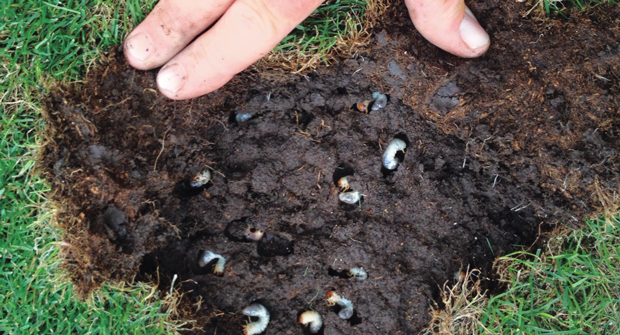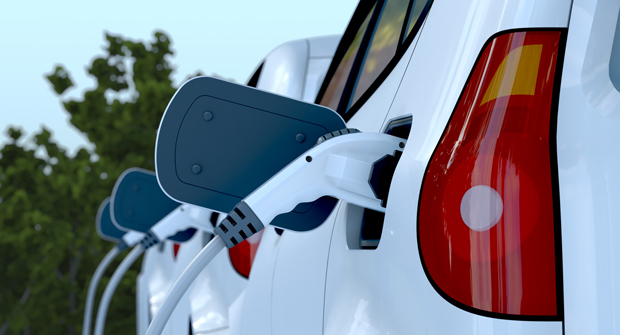Grubs — the larval stages of Japanese beetles, European chafers and June beetles — pose a significant threat to lawns across the U.S. and Canada, causing turf decline that can frustrate even seasoned lawn care professionals.
Grubs are C-shaped, cream or white larvae found in the soil that feed on your site’s grass roots. While most turf can tolerate small populations, larger numbers can quickly devastate lawns, especially if other stressors like drought are present.
A fine feast
When grubs start chowing down, the lawn is left brown, wilting or even covered in dead patches with irregular shapes that expand rapidly during peak feeding periods. Sometimes, the grass will even feel spongy or unstable, as infested lawns lose their solidity as roots are eaten.

Jason James, owner of Turf 212 in Greenville, S.C., says fescues especially are at risk compared to bermudagrasses and zoysias since it has softer tissue.
“You’re going to see a lot of growth activity in fescue,” he says. “Grubs don’t have teeth. They’re just going to suck the life out of (fescue) because it’s really soft, and they can eat fescue a little bit easier than they can eat a bermuda and a zoysia.”
He also explains that lawn care operators (LCOs) can detect grub damage by pulling up and peeling back the grass. With damaged roots, the turf should come up much easier, and it can even reveal the larvae feeding underneath.
“Usually, people will mistake dollar spot or a fungus or dog urine in fescue for grubs,” James says. “Sometimes it’s not, because if you can go out to that piece of turf, and if you can grab a hold of it, and pull it up like a toupee on a man’s head, that means you’ve got grubs.”
When there’s roughly five or more grubs in a square foot of turf, that’s when James says treatment should start right away.
And while it comes with the downside of further turf damage as beaks, paws and claws tear deeper into the grass, animal activity can also reveal where grub damage is occurring as they try to dig into the soil to feast on the larvae.
Chew on this, grubs!
Before all the chemicals and applications go down, it’s important to note that healthy, well-maintained turf is one of the best defenses against grubs, allowing grass to tolerate small infestations without noticeable damage. For lower-pressure sites, biological interventions like beneficial nematodes (Steinernema spp.) and bacteria such as Bacillus thuringiensis can provide control, though results vary and may take time to establish.
James warns that grubs like to feed most aggressively in the late summer to fall, as well as again in the spring when the ground starts warming up. He makes applications usually around aeration and overseeding, or simply when he notices activity occurring in September and October.
And for him, his secret weapon is Envu’s Dylox insecticide, which he says forces grubs to the top of the yard within 24 hours and has been very effective in his region.
Plus, while preventative applications with ingredients like chlorantraniliprole or imidacloprid can be effective, James says he prefers to monitor for grubs and treat reactively as to not waste products on unnecessary applications.
“If they don’t have grubs, you’re going out there and you’re just wasting that product on something that is not going to benefit the customers,” he says. “Usually, I treat for grubs when I see the activity. Once I start to see signs of grubs, I’m like, ‘OK, we need to do a grub control. We need to get this stuff down.’”


